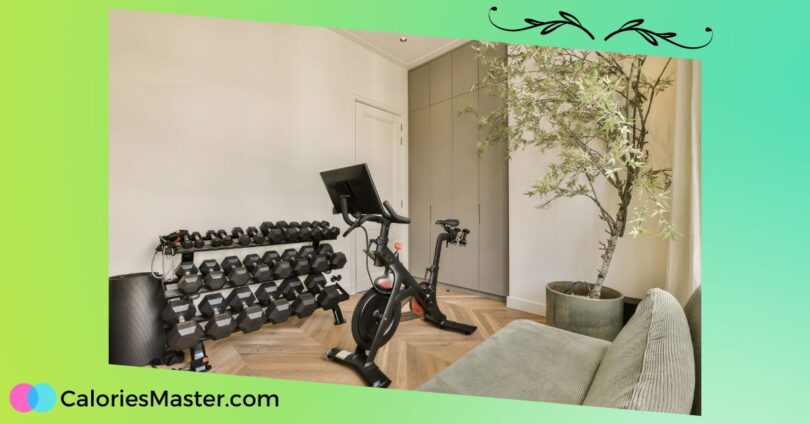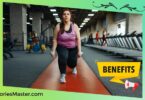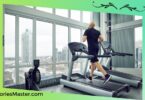If you’re a fitness enthusiast short on space, you might consider converting a spare room or your second floor into a home gym. But can you put a home gym on the second floor without compromising the structural integrity of your home?
The answer is yes but with some considerations.
First, you need to determine if your second floor can support the weight of gym equipment and the additional stress it may impose. Factors such as the total weight of your gear and your floor’s capacity should be considered.
It’s also best not to drop your weights while training on the second floor to avoid damage and noise. Additionally, you should check if your home is built to code and consider consulting with a structural engineer to ensure your home gym won’t cause any safety issues.
Overall, while it is possible to put a home gym on the second floor, it’s important to take the necessary precautions to ensure your home’s and yourself’s safety. In the following sections, we’ll delve deeper into the factors you should consider when creating a home gym on the second floor and provide tips to help you create a safe and functional workout space.
Structural Considerations for Second Floor Gyms
When setting up a gym on the second floor, you need to consider the structural integrity of your house. The weight of the gym equipment and the people using it can put a significant load on the floor. It is essential to ensure that the floor can support the weight and prevent any damage to the structure.
Weight Limits
The first thing you need to consider is the weight limit of the floor. According to building codes in the UK, the floor should support a live load of at least 1.5 kN/m2. This means that the floor can support a weight of 150 kg per square meter.
However, this is the minimum requirement, and you should aim for a higher weight limit if you plan to have heavy gym equipment.
Structural Assessment
Before installing any gym equipment, it is essential to have a structural assessment of your house. This will help you determine the load capacity of the floor and identify any weak points in the structure.
You should hire a professional structural engineer to assess your house and provide recommendations on strengthening the floor if needed.
Flooring Options
The type of flooring you choose for your gym can also affect the structural integrity of your house. Hardwood and concrete floors are the best options for a gym on the second floor. These materials can support heavy gym equipment and prevent damage to the structure.
However, if you have a carpeted floor, you may need to install a subfloor to support the weight of the gym equipment.
Safety Measures
Safety is also an important consideration when setting up a gym on the second floor. You should ensure the gym equipment is stable and secure and cannot tip over during use. You should also avoid dropping weights on the floor as this can cause damage to the structure.
Finally, ensure that the gym equipment is positioned away from windows and doors to prevent accidents.
Choosing the Right Equipment
When setting up a home gym on the second floor, choosing the right equipment is important to avoid any damage to your house. Here are some factors to consider when selecting gym equipment:
Weight Limitations
Weight limitations are among the most important factors to consider when selecting gym equipment for your second-floor home gym. Most houses are built to a preset standard, and the load capacity of a second floor in a home is regulated at 40 lbs per square foot [1].
For bedrooms, it is 30 lbs per square foot. Therefore, it’s essential to ensure that your gym equipment’s total weight does not exceed your floor’s weight limit.
To determine the weight of your gym equipment, you can use a scale or check the manufacturer’s specifications. You can also consult with a structural engineer or home inspector to determine the load capacity of your floor.
Vibration and Noise Reduction
Another factor to consider when selecting gym equipment for your second-floor home gym is vibration and noise reduction. Heavy gym equipment can create vibrations that can travel through the floor and walls, causing noise and disturbance to the rest of your household.
You can consider using gym equipment designed to absorb shock to reduce noise and vibration. You can also use rubber mats or other types of flooring that can reduce noise and vibrations.
In addition, you can consider using gym equipment designed to be quiet. For example, you can use an elliptical machine or a stationary bike instead of a treadmill, which can create more noise and vibration.
By considering weight limitations and vibration and noise reduction when selecting gym equipment for your second-floor home gym, you can ensure that your gym is safe, functional, and enjoyable.
Flooring Options for Upper-Level Gyms
If you’re planning to create a home gym on the second floor, it’s important to consider the type of flooring you’ll use. Not only do you want to protect your floor from heavy equipment, but you’ll also want to minimize noise and vibrations that could disturb other people in the house or even the neighbors.
Here are two flooring options to consider:
Protective Mats
One option is to use protective mats to cover the entire floor of your gym area. According to Two Rep Cave, putting down 3/4″ plywood followed by 3/8″ to 3/4″ rubber mats for a gym involving weights is recommended.
The plywood spreads the load across multiple joists and is a good, sturdy base layer over the carpet.
The rubber mats protect your floor and help reduce noise and vibrations. You can find rubber mats at most fitness equipment stores or online.
Soundproofing Layers
Another option is to add soundproofing layers to your gym area. This can be especially important if you have people living below your gym or if you’re concerned about disturbing your neighbors. According to Today’s Homeowner, one way to soundproof your gym area is to add a layer of mass-loaded vinyl (MLV) under your flooring.
MLV is a dense material that can help to block sound and vibrations. You can also add acoustic underlayment or carpet padding under your flooring to help absorb sound.
Overall, choosing a flooring option that will protect your floor, reduce noise and vibrations, and provide a safe and comfortable workout environment is important. Consider your specific needs and budget when choosing the right flooring option for your upper-level gym.
Safety Precautions and Installation
Safety should be your top priority when setting up a home gym on the second floor. There are two main aspects of safety to consider: professional assessment and secure equipment placement.
Professional Assessment
Before installing your home gym equipment on the second floor, it is important to have a professional assess the structural integrity of your home. This will ensure that your home can support the weight of the equipment and prevent any potential damage to the structure of your home.
A professional assessment will also identify any potential hazards that could compromise the safety of your home gym. For example, if your home has a weak floor structure, installing heavy equipment on the second floor may be unsafe.
Secure Equipment Placement
Once you have received a professional assessment and determined that your home is suitable for a home gym on the second floor, it is important to place your equipment securely. This will prevent any accidents or damage to your home.
One way to secure your equipment is to use rubber mats on the floor. This will prevent the equipment from slipping or sliding during use. Additionally, you should ensure that all equipment is properly anchored to the floor or wall.
Ensuring that your equipment is properly spaced out is also important to prevent overcrowding. This will ensure that you have enough space to perform exercises safely.
By following these safety precautions and installation guidelines, you can safely install a home gym on the second floor of your home.
Maintenance and Care of Home Gym Equipment
When you have invested in a home gym, you want to keep it in good condition to ensure it lasts as long as possible. Regular maintenance and care of your gym equipment are essential to keep it functioning correctly and to prevent any damage or wear and tear.
Cleaning
To keep your gym equipment in good condition, you should clean it regularly. Wipe down any surfaces with a damp cloth and mild detergent. Be sure to dry the equipment thoroughly to prevent any rust or corrosion. You can also use disinfectant wipes to clean any surfaces you touch during your workout.
Lubrication
Some gym equipment requires lubrication to keep it functioning correctly. Check the manufacturer’s instructions to see if your equipment needs lubrication and how often it needs lubrication. Use the recommended lubricant and apply it according to the instructions.
Inspection
Regular inspections of your gym equipment can help you identify any potential issues before they become major problems. Check for any signs of wear and tear, loose bolts or screws, or any other damage. If you notice any issues, address them immediately to prevent further damage.
Storage
Proper gym equipment storage can help prevent damage and extend its lifespan. Store your equipment in a dry, cool place away from direct sunlight. If possible, cover your equipment to protect it from dust and debris.
Maintenance Schedule
Creating a maintenance schedule for your home gym equipment can help you stay on top of regular maintenance and care. Check the manufacturer’s instructions for recommended maintenance intervals and create a schedule that works for you.
Following a regular maintenance schedule can help keep your gym equipment in good condition and extend its lifespan.









